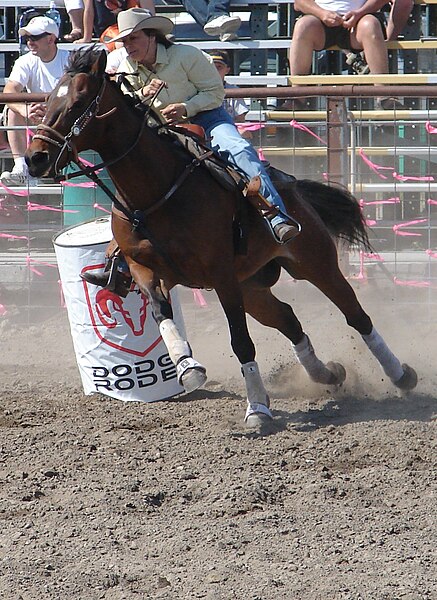I was crazy about horses growing up, a passion I never really got the chance to put into practice. I’ve ridden a few times at friends’ houses, and on vacation two summers ago my daughter and I went on an hour-long trail ride, but that’s it.
But one of my favorite parts of writing historical romance is getting to be that horse-crazy child again. For my Regency heroes and heroines, horses provide basic transportation. And most of the time, my love for horses finds its way into my characters to one degree or another. James in A Marriage of Inconvenience breeds Arabians. Will and Anna in The Sergeant’s Lady both get a chance to ride a beautiful Spanish mare named Dulcinea.
My current WIP is set in America in 1815, so I did a little research into whether familiar American breeds of today like the Quarter Horse, the American Saddlebred, the Tennessee Walker, and the Morgan existed yet. And for the most part the answer was yes, although they weren’t yet firmly codified with breed standards and closed stud books.
Henry, my hero, is an accomplished horseman, fit and athletic. Over the course of my plot, he needs a horse that’s steady and enduring for a long journey, but also fleet-footed and nimble when needed for an action scene. So I decided to put him on a new American horse bred from a mixture of Spanish Barbs and English stock, including Thoroughbreds–a practical, sturdy horse good for everyday riding, but also speedy over short distances. In other words, a Quarter Horse, or as they were known at that early date, a Quarter Running Horse. (The name comes from the short quarter-mile races these horses excelled at.)
The modern Quarter Horse runs the gamut from a beefy, muscle-bound creature shown for looks in halter classes to slender racehorses who greatly resemble Thoroughbreds. I’m picturing Henry’s horse as something like this barrel racer–wiry, compact, and nimble.

My heroine Therese, on the other hand, had neither the necessity nor the opportunity to learn to ride before she has to when called upon to escape cross-country for the “road romance” portion of my plot. So she needs a horse that’s above all else gentle, good-natured, and smooth-gaited. Fortunately for her, there was a horse around in the early 19th century known simply as the “American Horse” noted for its smooth “ambling” gaits. Its modern descendants include the Tennessee Walking Horse, the American Saddlebred, and the Missouri Fox Trotter, so I imagine Therese’s horse as looking a bit like this Fox Trotter:

Are you a horse lover? If you found yourself living in the Regency era, what kind of horse would you ride? Or would you stick to carriages and leave the driving to your trusty coachman?

I was also horse-crazy from a young age, reading every Marguerite Henry and Walter Farley book I could get hold of. I was lucky enough to start taking riding lessons once a week as a teen, and kept it up for some time as an adult, although I never felt ready financially or time-wise to own a horse. Now life has taken over, but I hope to get back to it sometime.
My favorite horses have been some sort of Thoroughbred cross. I’ve ridden a number of Quarter Horse/Thoroughbred crosses and a mare who was half Percheron (a French heavy horse breed). She was lovely! While I lived in England, I got to ride a friend’s horse who was part Irish draft, part Thoroughbred. He was a big sweetie. I made him the hero’s horse in LORD LANGDON’S KISS (http://www.elenagreene.com/jack.jpg) and still mist up when I think of him…
I loved Marguerite Henry and Walter Farley books too! King of the Wind was my favorite, and I’m sad that Miss Fraser has as yet shown no interest in the copy of it I left in her room.
I’ve been an ardent horse lover from the age of nine when a couple of fortunate circumstances conspired to make me so. My parents bought me a beautiful hardbound copy of Black Beauty. We moved to England (Air Force Brat.) And the little village we moved to had a country squire who raised racehorses! I spent a great deal of time helping out at the stables in return for learning to ride. And then two retired librarians moved in next door and put horses (hunter/jumpers) and a Welsh pony into the four stall stable that looked out onto the common driveway we shared. I spent many a Saturday and Sunday trotting about the village on that pony with my friends.
I owned a quarter horse/ Tennessee walker cross for many, many years as an adult. Taz was the equine love of my life and I miss him terribly. He lived to a ripe old age and died in his sleep under his favorite tree in the pasture, which is where I laid him to rest. There are nights I still hear him rattling the gate, impatient for my short legs to hurry up with his bucket of feed!
Your childhood experiences sound wonderful, and I’m glad you had so many happy years with Taz!
I loved horses when I was a child but I turned out to be a lousy rider so I remained a spectator for the most part. In the Regency I think I’d be ambling around on a fat hack that would go to sleep and ignore me, or riding around in a trap. I’d far rather look at pics of handsome horses than men. Thanks for posting!